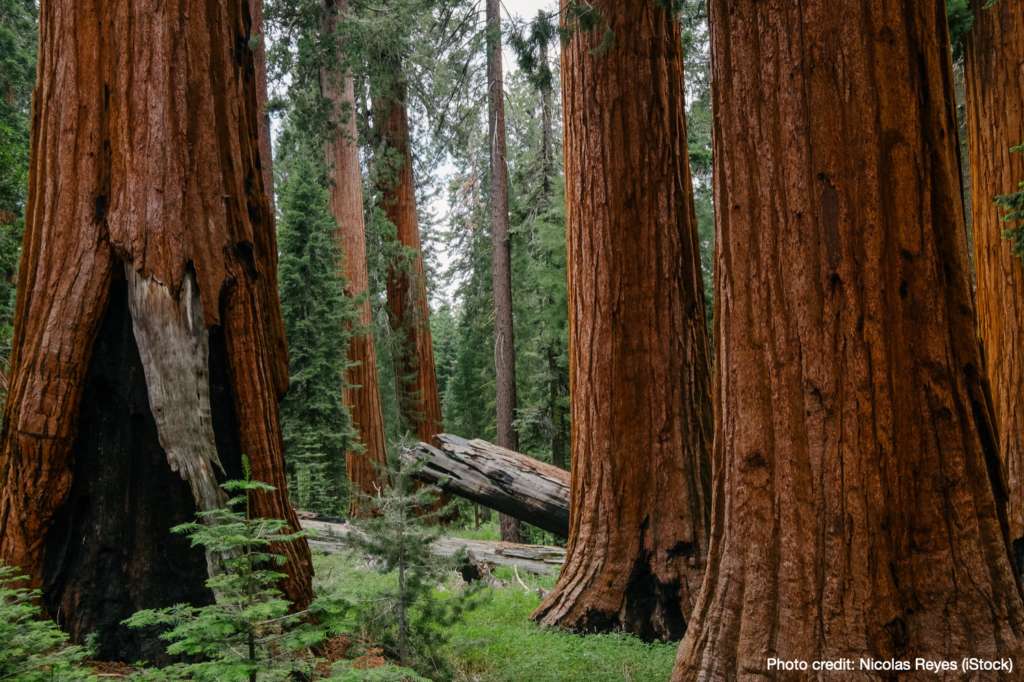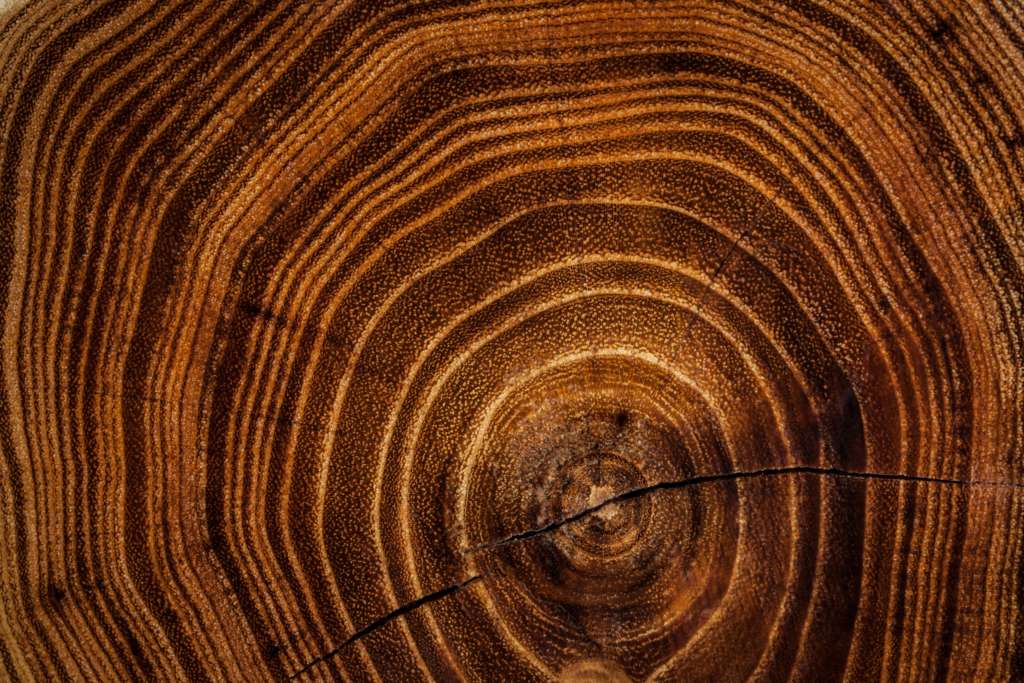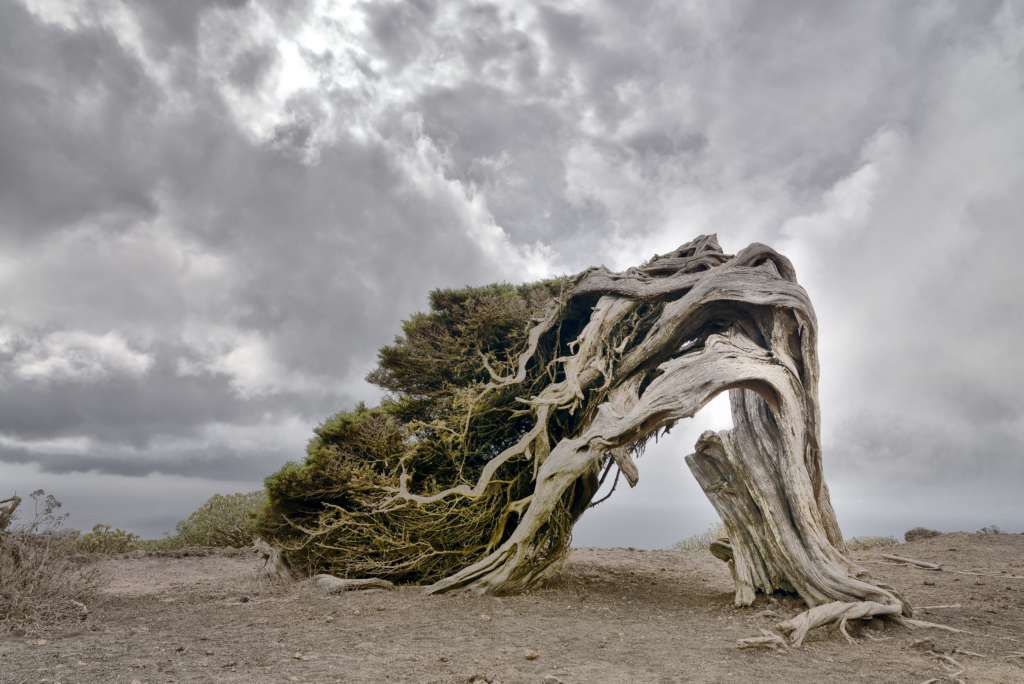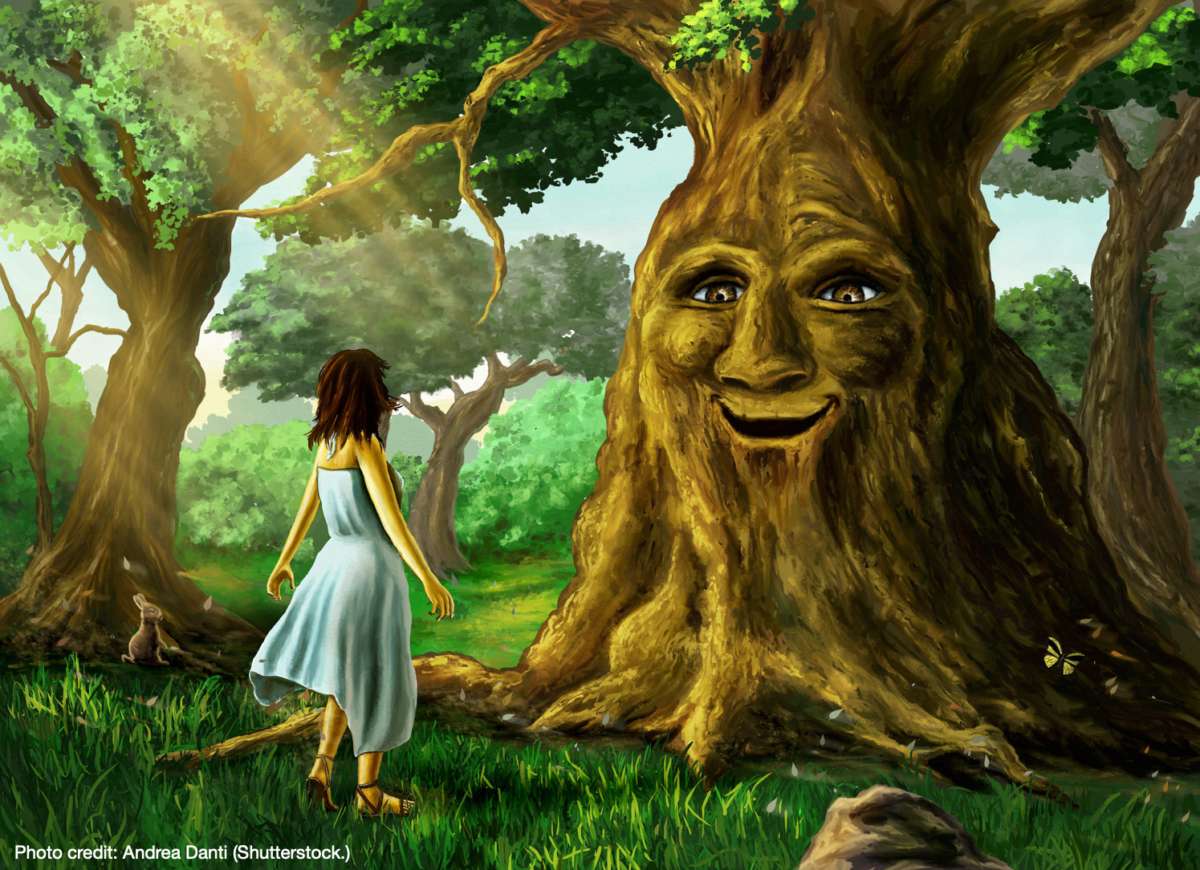This is an updated post to include additional information.
I have had a few thoughts of trees lately. It’s autumn in New England, and though my wife and I live in upstate New York, the spectacular colors of fall do not stop at the Vermont border. Also, living with a forest in our backyard provides us with ample reminders that winter is fast approaching as thousands of leaves, blown by the wind, scurry across our driveway daily like shifting sand. The trees take on a new, Stygian aspect without their colorful garments. They appear completely stoical, dead to the world without leaves, but is there a secret life of trees?
Then, too, I read a story lately, perhaps in the New York Times or Live Science, about how being in the presence of trees has positive health benefits for people, specifically in terms of lowering their blood pressure and stress reduction overall. The NY State Department of Environmental Conservation tells us: “Numerous studies show that both exercising in forests and simply sitting looking at trees reduce blood pressure as well as the stress-related hormones cortisol and adrenaline.” Perhaps this is done through the chemical compounds that trees transpire. So, trees are good things, right?
Finally, I cannot dismiss thoughts of the fires in California that threaten the majestic Sequoias. These trees can live almost as long as 3,000 years and grow almost 300 feet high. That makes trees the oldest living things on the planet! The Redwoods (of the same genus) can grow even higher, but only live a mere 2,000 years if conditions are ideal. One bristlecone pine tree living in California has a verified age of almost 5,000 years! At the moment, forest workers in California are frantically wrapping the lower trunks of these giants with flame retardant fabric. I wonder how my fellow countrymen would respond if they awoke some morning in the weeks ahead to learn that these trees were destroyed by fire? No doubt some would be saddened by the news over breakfast before solemnly whispering “Pass the toast.” Some might point out cheerfully that there are still many other trees in the world that remain–not to worry! A few of us, in our shock, may not know what we’ve truly lost, even if it means one less item to check off on our “bucket list.” I’m probably in that last category. How can we appraise what the true loss might be if we don’t understand much about trees at all (beyond their role in the carbon cycle, that is?)

What we know about trees
Trees are capable of hosting entire communities of insects, birds and small mammals. In some cases, they provide food for their biome and in almost all instances, shelter. By exchanging CO2 for O2 they form the “lungs” of the planet. Trees typically have roots, trunks, branches and leaves or needles. They may be deciduous in that they lose their leaves each year, or they may be evergreen (e.g., conifers.) There may be several trillion trees in the world, but that is just an estimate and not a license to loot. Ten thousand acres a day of the rainforest in Brazil, alone, are burned and bulldozed.
“Numerous studies show that both exercising in forests and simply sitting looking at trees reduce blood pressure as well as the stress-related hormones cortisol and adrenaline.”
NEW YORK STATE DEPARTMENT OF ENVIRONMENTAL CONSERVATION
The roots of a tree are important in terms of controlling soil erosion, while the tree, itself, locks up carbon that might otherwise imperile the ecosphere. Fallen leaves decay and nourish the soil. Fruit of the trees, such as seeds and nuts provide food for birds, squirrels, chipmunks and others. Fruit trees provide apple and pears for deer and bears. Humans profit from both nuts and fruit and often cultivate these trees.
I’m not sure we have the necessary patience to study trees closely, however. They grow on such a slow scale. They matured a century before we were born and will survive us by three centuries more. Who has time for that!1
Endless questions
I’ve always been fascinated by Bible verses that “push the envelope” of our reality. I’m referring to verses about talking donkeys, stones that cry, and trees that clap their hands. For example, Psalm 96:11-12: “Let the heavens be glad, and let the earth rejoice; let the sea roar, and all that fills it; let the field exult, and everything in it! Then shall all the trees of the forest sing for joy” How can a tree sing for joy? Of course, there are theologians who would say I should not take these verses literally, but what if trees have special abilities or spiritual properties that we as people cannot perceive? What if trees have a rudimentary “language” among themselves through mycorrhizal networks, a chemical, biosemiotical process, a secret life? What would they say about us? About their Creator? How can they praise God as David assures us that they do? Do they praise God just by exisiting, like a Renoir in an art museum? Or something else–some other way? Is a tree a unique, discrete (i.e., single) organism, or is the organism the forest, itself, in which case the tree is akin to a single cell? Or, maybe something on a much grander scale; Perhaps the organism is actually the sum of all the forests on the planet? I don’t see this as animism, because the Bible has opened the door here, and I’m just peeking through. Perhaps this is even the cutting edge of science? Is it possible that even science needs a “soul” and our forests are a good place for science to find one?
Trees in myth and legend
Trees were thought to be sacred in Greek mythology and in other primitive cultures, including the Celtic religion. At first, trees were thought to be spirits in an unusual form, but over time, people came to believe that there were ordinary trees, and then there were spirits that lived in these trees, such as the dryads and hamadryads. These spirits would protect these trees from woodsmen and other dangers.2 In some cultures, people would worship the deities that they believe inhabited the trees. A modern and very subtle form of this worship can be found in John Steinbeck’s novel “To a God Unknown.” Trees also figured prominently in the Judea-Christian religion:
- The Tree of Life and the Tree of the Knowledge of Good and Evil appear in Genesis, Chapters 2 and 3.
- The olive tree signified to Noah that there was once again, dry land (Genesis 8:11.)
- “The Lord appeared to Abraham near the great trees of Mamre while he was sitting at the entrance to his tent in the heat of the day” (Genesis 18:1.)
- In face, trees are mentioned in the Bible more than any other living thing besides God and man.
- Jesus died on a tree stripped of its branches (Galatians 3:13.)
Reading the history of a tree

If you look at the photo to the left, you can see the annual growth rings of a tree. One dark ring and one light ring equals one year of growth. The light ring represents growth in the spring and early summer, the dark ring represents growth in late summer and fall. The thickness of the ring indicates the amount of water or other suitable variables present for growth (such as the absence of overcrowding from other trees.). During periods of drought, the rings are much thinner. Young trees grow faster than old trees, so as you get further from the core of the tree (all things being equal), the rings would normally appear to be smaller. If the tree is located in a mountainous area, the appearance of the rings may speak to the size of the snowcap.
Besides age, tree rings can tell us what exposure to fire the tree had in the past, as well as insect infestations. Also, dendrochronologists believe that they can infer important climate-related changes in the tree past based on how the tree rings are arrayed.
Are trees more “intelligent” than we give them credit for?
Academic research in Germany by credible universities suggest that trees can communicate with each other and work together. For example:
“When elms and pines come under attack by leaf-eating caterpillars, for example, they detect the caterpillar saliva, and release pheromones that attract parasitic wasps. The wasps then lay their eggs inside the caterpillars, and the wasp larvae eat the caterpillars from the inside out.”
Smithsonian Magazine (ibid.)
As author Doug Brown says writing in Medium:
“Trees are not merely alive in some abstract conception of biological life. Trees experience life. Trees know each other. Trees relate to each other. Trees know their own species and will cooperate with siblings to help each other survive. They communicate oncoming risks, such as parasitic or viral infestations. They know the other plants around them that are symbiotic to them, and they share nutrients back and forth. They know the species that are antagonistic to them and take sophisticated steps to combat them.
Brown goes on to say:
“Trees learn. Trees retain knowledge. Trees nourish, sometimes giving of themselves to their fellows who are lacking in sugars or defense chemicals. We’ve lived too long with the idea that trees compete for the sun. In fact, trees with abundant canopies and wide access to sunlight will use their roots and mycorrhizal networks to send energy to their less fortunate siblings, sometimes even nourishing a stump.
The trees know their families, they know their neighbors. Yes, they know their competitors too. Trees know the risks they face. They know their lifegiving sources. They know their sunlight, their water, their soil, their seasons.“
ibid.
Alarm and distress seem to be the most common themes “communicated” by trees. A researcher at the University of Western Australia named Monica Gagliano “has gathered evidence that some plants may also emit and detect sounds, and in particular, a crackling noise in the roots at a frequency of 220 hertz, inaudible to humans.” (Smithsonian Magazine: ibid.)
According to Nature World News, “more specifically, [sounds] are picked up [by trees] by the vibrations that sound makes through their trunks and branches. The sound of voices can also echo to the very ‘heart’ of trees, allowing them to detect the presence of other lifeforms in the forest.”
Through an underground network consisting of roots and molds, trees maintain physical contact with each other. “Parent” trees provide nourishment to their seedlings until the tiny offspring are able to compete with mature trees for the sunlight necessary for photosynthesis. So, trees seem to be very much more communal than we’ve ever thought possible. Yet, they are still a long way from the Ents of Middle Earth (as far as we know.)
“A revolution has been taking place in the scientific understanding of trees. . .Trees are far more alert, social, sophisticated–and even intelligent–than we thought.”
Smithsonian Magazine (ibid.)
In what way or sense can trees clap and sing for joy?
I was disappointed that so few people have attempted to answer this question. Mark Harris, who reads Science and religion at Edinburgh University in Scotland did attempt this, however (God bless him.)
Trees don’t have hands of course, but the clashing of tree limbs in a strong wind can simulate this or create a reasonable facsimile. People clap when they are enthused or moved by the Spirit of God, and the Spirit (πνεύμα) leads people to clap.
The other point Dr. Harris makes is that trees, and rocks, mountains, oceans, animals and people are all under the curse. In Romans 8:22 Paul writes “We know that the whole creation has been groaning as in the pains of childbirth right up to the present time.” The phrase the whole creation is key in this verse. Benson’s Commentary notes in his first hypothesis:
“According to some commentators, the words πασα η κτισις [i.g., the whole creation] denote the whole creatures of God, animate and inanimate, which, as they were cursed for the sin of the first man, may, by a beautiful rhetorical figure, be represented as groaning together under that curse, and earnestly wishing to be delivered from it. Such figures indeed are not unusual in Scripture. See Psalm 96:12; Psalm 98:8.”

But the editor of Benson’s Commentary prefers, himself, to interpret the passage as applying to man, only (hypothesis #2.) Barne’s and Expositors Commentaries hold with the first hypothesis, however, as do I. While the second possiblity of the two may “fit” better than the other, it does not exclude the other, which still remains true. In other words, trees die for the same reason people die–the presence of sin in a fallen, cursed world. And if trees were in some way sentient, no doubt they would applaud the approach of their creator (and note I did not use the word “redeemer.”)
So, imagine the mountains, rocks, glens and glades, rivers and streams, and trees groaning under the curse, made worse by man’s wanton folly. What a mournful harmony! But then, what a joyous ensemble as the Creator’s return looms near!
What if the history of people were similiarly preserved?

What if we could somehow “read” the history of people, like the rings on a tree? We could observe the good years, the lean years. Like the trunk of a tree, the body could show us injuries scarred over, close encounters with death. And if people could be a tree, how would they appear? Like well-rounded maple tree in the prime of its life, or perhaps a pecan tree laden with fruit. Perhaps a gnarled, barren tree with just the hint of life to it, living a tortured existence of little use or purpose to anything. Or, a tree tightly entombed by the vines of a strangler fig that squeezes the very essence of the tree out through the bark. Here, the vine-enclosed tree represents a hopeless, savior-less, lost cause struggle against sin. A person who is unable to move about freely, imprisoned by his or her own circumstances, and too proud or too blind to accept the mercy of God in order that they might be restored to a wholesome state once again.
I think there is a greater appreciation available for the world God has made if we are attentive to each component of creation. I’ve learned that a young tree is just as important as a young deer, and that each object “fits” in the tile of life in a certain unique way. I also believe it’s incumbent on us to preserve that harmony to the best of our abilities.
I also believe that there is a secret life of trees that will one day be discovered or revealed. These silent sentinels have a lot to tell us if we only have the ears to listen.
Endnotes
1I knew a young woman with a significant stuttering problem once. She had to interact with customers in a small business. She told me how angry some customers would get with her because it took her a while and several tries to answer their questions. They didn’t have the patience (or even the sympathy) for this poor woman who tried her very best to be friendly and accommodating. So, they would swear at her and slam the door on the way out. I suppose they thought she wasn’t worth their time. Could it be that for us, trees are not worth our time?
2Organization & Environment, vol. 12, no. 3, Sage Publications, Inc., 1999, pp. 325–31,
Citations
KNOPP, LISA. “THE MEMORY OF TREES.” Organization & Environment, vol. 12, no. 3, Sage Publications, Inc., 1999, pp. 325–31, http://www.jstor.org/stable/26161480.



